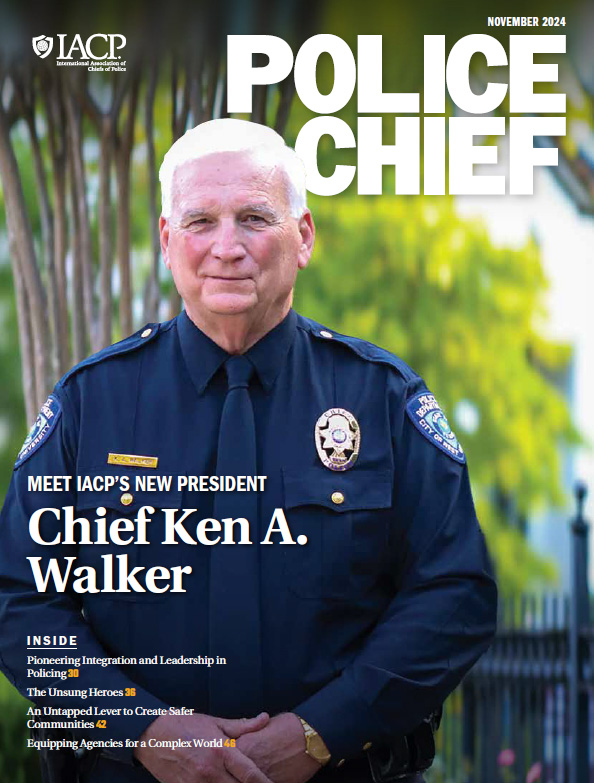Share
As the 2015 IACP/DuPont Kevlar Survivors’ Club initiative wraps up and 2016 begins, the IACP reflects back on program changes and the successes achieved with an eye toward the year to come. A signif...
Share
Sleep is an absolute necessity. Although the amount of sleep required for good health varies from one person to the next, there is no dispute that the lack of quality sleep takes a heavy toll on a per...
Share
Law enforcement officers (LEOs) are at risk for both medical and traumatic emergencies even during training and when not engaged in what would be considered hazardous situations. Each year, the same t...
Share
Law enforcement involves a wide array of medical concerns affecting both officers and the individuals they encounter. When these concerns arise, police chiefs often seek advice from departmental lawye...
Share
Since its founding in 2012, the IACP Center for Officer Safety and Wellness (the Center) has emerged as the leading repository for resources designed to guide law enforcement in a range of officer saf...
Share
The primary goal of the Federal Bureau of Investigation (FBI) Uniform Crime Reporting (UCR) Program’s Law Enforcement Officers Killed and Assaulted (LEOKA) Program is to reduce the number of law enf...
Share
John, a 47-year-old veteran officer and experienced bomb technician, was about to have a bad day, though no one, including him, saw it coming. The cool spring air made bomb suits more comfortable than...
Share
It may seem hard to believe, but the most minor of physical injuries can lead to severe emotional consequences that affect all aspects of an officer’s personal and professional life. A 1996 study co...


